Mexican Alligator Lizard
- January 8, 2024
- 0 comment
The Mexican Alligator Lizard, scientifically known as Abronia graminea, is a captivating reptile native to the diverse landscapes of Mexico. Renowned for its unique appearance and intriguing behavior, this species has become a subject of fascination for both scientists and nature enthusiasts. With an elongated body adorned with vibrant coloration and distinctive dorsal scales, the Mexican Alligator Lizard stands out as a remarkable creature in the realm of reptiles. Its evolutionary traits tell a story of adaptation and survival, contributing to its success in the ever-changing environments it inhabits. From temperate forests to mountainous terrains, these lizards showcase an impressive adaptability to a variety of ecosystems. Nocturnal by nature, their nighttime habits, and feeding patterns add layers of mystery to their behavior.
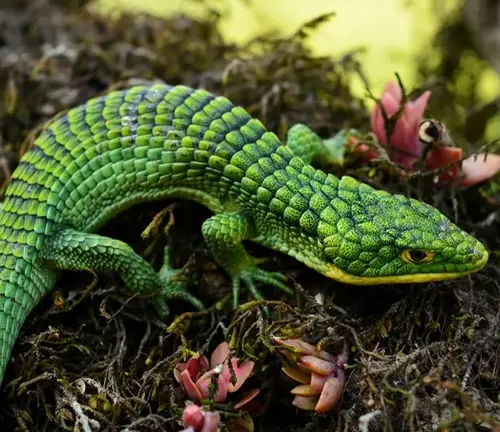
Beyond their physical characteristics, Mexican Alligator Lizards play a crucial role in maintaining ecological balance within their habitats. As both predators and prey, they contribute to the intricate web of life, showcasing the interconnectedness of diverse species in their ecosystems. Unfortunately, these fascinating reptiles face numerous threats, including habitat loss and illegal trade. Conservation efforts by organizations and communities aim to safeguard their future and raise awareness about the importance of preserving biodiversity. Rich in cultural significance and shrouded in mythologies, Mexican Alligator Lizards invite us to explore the intersection between nature and human culture. Their unique features, coupled with ongoing scientific research, make them a symbol of biodiversity that deserves our attention and protection.
| Attribute | Details |
|---|---|
| Scientific Name | Abronia graminea |
| Physical Characteristics | Elongated body, vibrant coloration, distinctive dorsal scales |
| Evolutionary Traits | Adaptation and survival strategies |
| Habitat | Mexico, spanning various altitudes and ecosystems |
| Behavior | Nocturnal habits, unique feeding patterns |
| Reproduction | Intricate mating rituals, egg-laying, parental care |
| Conservation Status | Faces threats like habitat loss and illegal trade |
| Cultural Significance | Embedded in local mythologies and traditions |
| Biodiversity Impact | Plays a role in maintaining ecological balance |
| Predators | Faces threats from larger predators in its habitat |
| Conservation Efforts | Ongoing initiatives by organizations and communities |
| Scientific Research | Continuous studies on biology, behavior, and ecological impact |
| Unique Features | Regenerative abilities, distinctive communication methods |
| Interaction with Humans | Encounters in the wild and captivity, not generally dangerous |
| Pet Status | Not advisable due to specific habitat requirements |
A Fascinating Journey into the Enigmatic World
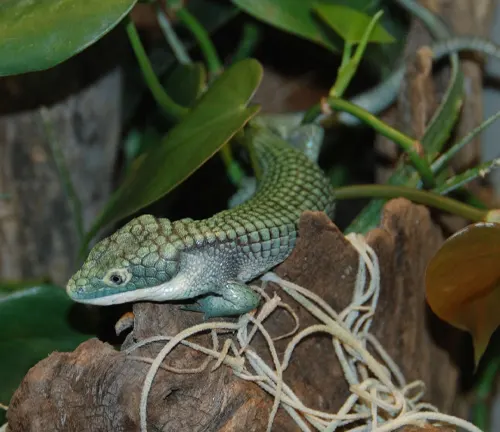
The Mexican Alligator Lizard, a creature shrouded in mystery and awe, stands as a testament to the diverse wonders of our natural world.
Brief overview of the Mexican Alligator Lizard
The Mexican Alligator Lizard, scientifically known as Abronia graminea, is a mesmerizing reptile native to the lush landscapes of Mexico. With its distinct appearance and intriguing behavior, this species has captured the curiosity of scientists and nature enthusiasts alike.
Importance of understanding this unique species
Understanding the Mexican Alligator Lizard is crucial not only for the sake of biodiversity but also for unraveling the secrets of evolution and coexistence in complex ecosystems.
Physical Characteristics
Distinctive features of the Mexican Alligator Lizard
Characterized by its elongated body, vibrant coloration, and unique dorsal scales, the Mexican Alligator Lizard boasts a distinctive appearance that sets it apart from other reptiles. The intricate patterns on its scales serve both aesthetic and functional purposes.
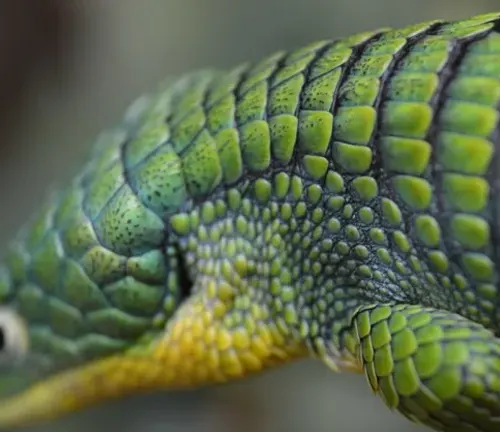
Evolutionary traits that set it apart
Exploring the evolutionary adaptations of this species provides valuable insights into the survival strategies developed over time, contributing to its current success in its natural habitat.
Natural Habitat
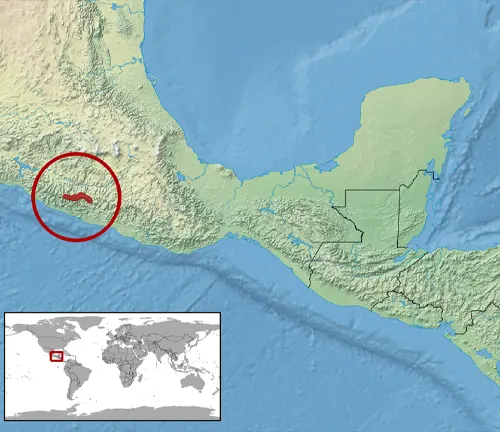
Geographic distribution
Mexican Alligator Lizards inhabit specific regions within Mexico, showcasing a preference for particular altitudes and ecosystems. Understanding their natural habitat aids in conservation efforts and ensures the preservation of their ecosystems.
Preferred ecosystems and climate
From temperate forests to mountainous terrains, these lizards exhibit remarkable adaptability to diverse environments. Unraveling their preferred ecosystems sheds light on their role in maintaining ecological balance.
Behavior and Lifestyle
Nocturnal habits
The nocturnal nature of Mexican Alligator Lizards raises questions about their behavior during nighttime hours. Exploring their nocturnal habits provides a fascinating glimpse into their hunting and social interactions.

Feeding patterns and diet
Analyzing the feeding patterns and diet of these reptiles reveals their role in local food chains and the impact of their dietary preferences on ecosystem dynamics.
Reproduction

Mating rituals
The intricacies of mating rituals in Mexican Alligator Lizards offer a captivating insight into their social structure and reproductive strategies. Understanding these rituals is essential for species conservation.
Unique aspects of reproduction in Mexican Alligator Lizards
From egg-laying to parental care, the reproductive journey of these lizards presents a captivating narrative of survival strategies and evolutionary adaptations.
Conservation Status
Current threats and challenges
Despite their resilience, Mexican Alligator Lizards face numerous threats, including habitat loss and illegal trade. Recognizing these challenges is crucial for developing effective conservation strategies.
Efforts in place to protect the species
Conservation organizations and local communities play a vital role in safeguarding the future of these lizards. Highlighting ongoing efforts showcases the collective commitment to preserving biodiversity.

Interaction with Humans
Mythology and cultural significance
Throughout history, Mexican Alligator Lizards have held cultural significance in local mythologies and traditions. Exploring these cultural connections adds a layer of richness to our understanding of the species.
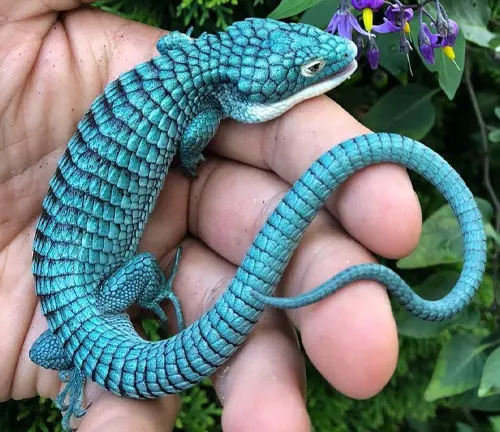
Encounters in the wild and captivity
Instances of human encounters with Mexican Alligator Lizards, both in the wild and captivity, provide valuable anecdotes that bridge the gap between scientific study and public awareness.
Popular Misconceptions
Addressing common myths about Mexican Alligator Lizards
Dispelling misconceptions surrounding these reptiles is essential for fostering appreciation and support for their conservation. Separating fact from fiction promotes a more accurate understanding of their ecological role.
Clarifying their role in the ecosystem
Mexican Alligator Lizards play a vital role in maintaining the delicate balance of their ecosystems. Clarifying their ecological significance helps dispel unfounded fears and prejudices.
Biodiversity Impact
Role in maintaining ecological balance
As predators and prey, Mexican Alligator Lizards contribute to the intricate web of life in their habitats. Analyzing their biodiversity impact emphasizes the interconnectedness of all living organisms.
Importance in preserving overall biodiversity
Understanding the broader implications of Mexican Alligator Lizard conservation reinforces the importance of preserving biodiversity as a whole. Their survival is intertwined with the health of entire ecosystems.
Scientific Research
Studies and findings related to Mexican Alligator Lizards
Scientific research on Mexican Alligator Lizards continually unveils new discoveries about their biology, behavior, and ecological interactions. Summarizing key studies offers a glimpse into the ongoing scientific exploration of this species.
Contributions to broader scientific knowledge
The knowledge gained from studying Mexican Alligator Lizards extends beyond their specific species, contributing to broader scientific understanding of reptilian biology, adaptation, and evolution.
Threats to Survival
Human-induced threats
Human activities, including habitat destruction and illegal trade, pose significant threats to the survival of Mexican Alligator Lizards. Examining these threats sheds light on the urgent need for conservation action.
Environmental challenges faced by the species
Environmental changes, from climate fluctuations to pollution, present challenges for the adaptation and survival of Mexican Alligator Lizards. Recognizing these challenges is crucial for informed conservation strategies.
Conservation Efforts
Initiatives by conservation organizations
Dedicated efforts by conservation organizations aim to mitigate the threats faced by Mexican Alligator Lizards. Highlighting these initiatives encourages public support and engagement in conservation activities.
How individuals can contribute to the preservation of Mexican Alligator Lizards
Empowering individuals with actionable steps to support conservation efforts fosters a sense of responsibility and collective action. Every individual can play a role in ensuring the survival of these remarkable creatures.
Future Prospects
The outlook for the Mexican Alligator Lizard species
Examining the current trajectory of Mexican Alligator Lizards offers insights into their future prospects. Factors influencing their survival and potential advancements in conservation efforts shape the outlook for this species.
Potential advancements in conservation efforts
Technological and scientific advancements provide hope for more effective conservation strategies. Exploring potential breakthroughs highlights the collaborative efforts underway to secure a sustainable future for Mexican Alligator Lizards.
Different Species
Abronia graminea
(Mexican Alligator Lizard)
This species is characterized by its elongated body, vibrant coloration, and unique dorsal scales. It is native to Mexico and plays a crucial role in its ecosystems.
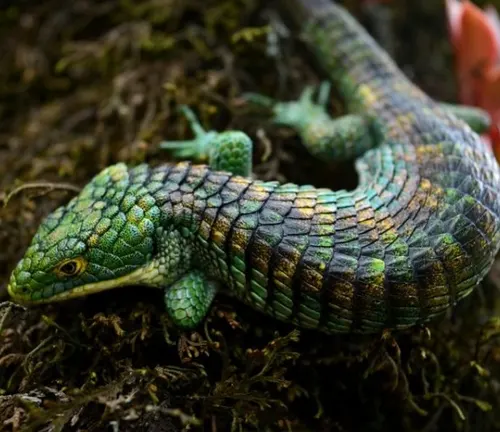
Abronia anzuetoi
(Anzueto’s Arboreal Alligator Lizard)
Found in the mountainous regions of Mexico, this species is known for its arboreal lifestyle. It displays a range of colors and patterns, making it visually striking.
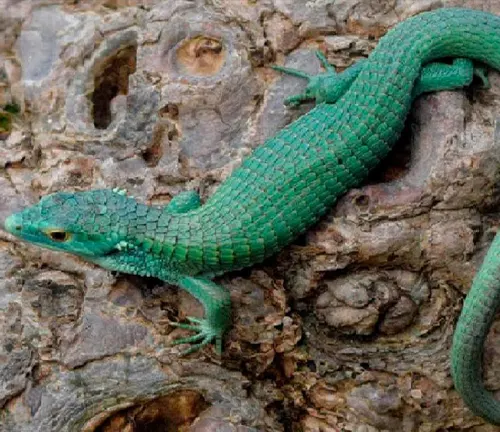
Abronia aurita
(Green Arboreal Alligator Lizard)
The Green Arboreal Alligator Lizard is recognized for its green coloration and arboreal habits. It inhabits the cloud forests of Mexico, showcasing adaptations to this specific environment.

Abronia campbelli
(Campbell’s Alligator Lizard)
Endemic to Mexico, Campbell’s Alligator Lizard is notable for its distinct color patterns and relatively small size compared to other species in the genus.
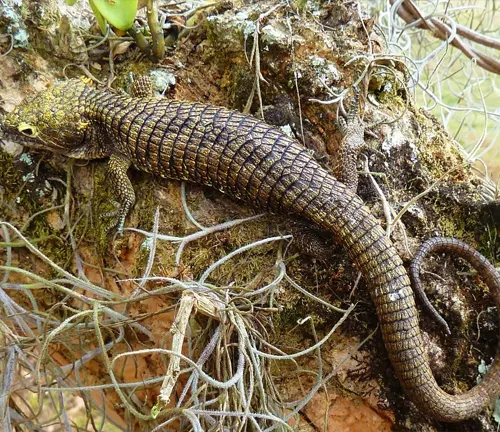
Abronia fimbriata
(Frilled Arboreal Alligator Lizard)
This species stands out with its fringed scales, giving it a distinctive appearance. It is found in the highlands of Guatemala and Mexico.

Abronia lythrochila
(Red-lipped Arboreal Alligator Lizard)
Named for its striking red lips, this species is native to Mexico. Its unique coloration makes it a sought-after species among reptile enthusiasts.
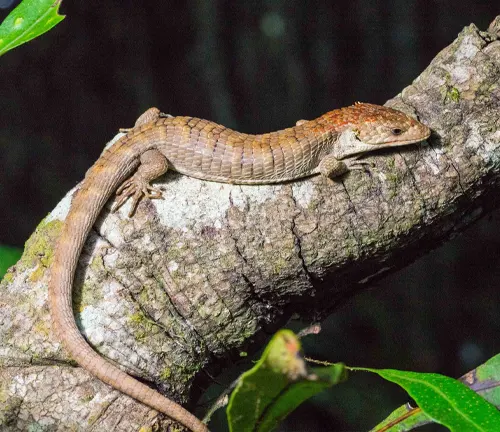
Abronia meledona
(Cloud Forest Alligator Lizard)
Inhabiting the cloud forests of Mexico, this species exhibits adaptations to a cooler and mistier environment. Its appearance and behaviors are tailored to this specific habitat.
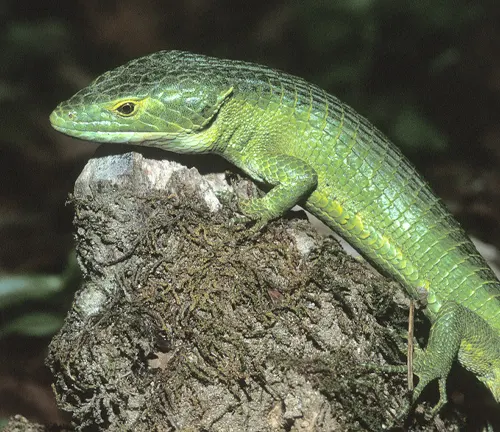
Abronia oaxacae
(Oaxacan Alligator Lizard)
Endemic to the state of Oaxaca in Mexico, this species is known for its vibrant colors and preference for montane forests.
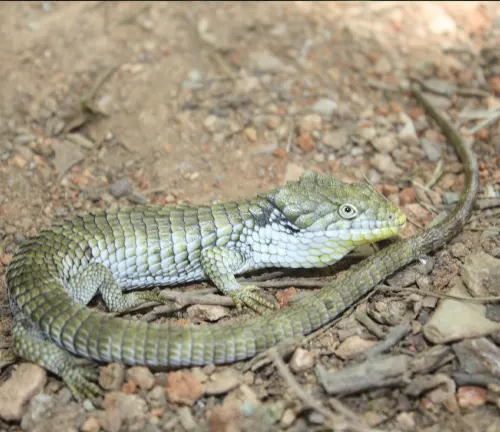
Frequently Asked Questions (FAQs)
- Are Mexican Alligator Lizards venomous?
No, Mexican Alligator Lizards are not venomous. They rely on other defense mechanisms, such as camouflage and agility, to avoid predators. - How long do Mexican Alligator Lizards live in captivity?
The lifespan of Mexican Alligator Lizards in captivity can vary, but on average, they may live between 10 to 15 years with proper care. - What do Mexican Alligator Lizards eat in the wild?
In the wild, Mexican Alligator Lizards have a diverse diet that includes insects, small invertebrates, and occasionally small vertebrates. - Can Mexican Alligator Lizards regrow their tails?
Yes, Mexican Alligator Lizards, like many other lizard species, have the ability to regrow their tails if they are lost or detached as a defense mechanism. - Do Mexican Alligator Lizards hibernate?
While not true hibernators, Mexican Alligator Lizards may undergo periods of reduced activity during colder months, especially in higher elevations. - Are there specific legal restrictions on owning Mexican Alligator Lizards as pets?
Regulations regarding the ownership of Mexican Alligator Lizards vary by location. It’s important to check local and international wildlife protection laws before acquiring one as a pet. - What role do Mexican Alligator Lizards play in their ecosystems?
Mexican Alligator Lizards contribute to ecosystem balance by regulating insect populations and serving as prey for larger predators. Their presence is integral to the health of their habitats. - How do Mexican Alligator Lizards communicate with each other?
Communication in Mexican Alligator Lizards involves a combination of body language, postures, and sometimes vocalizations. They may also use scent marking to establish territories. - What is the significance of the patterns on Mexican Alligator Lizards’ scales?
The intricate patterns on their scales serve both aesthetic and functional purposes, aiding in camouflage and possibly playing a role in species recognition. - Can Mexican Alligator Lizards adapt to different climates?
Mexican Alligator Lizards exhibit adaptability to various climates, from temperate forests to mountainous terrains. However, their specific habitat preferences can vary by species. - Do Mexican Alligator Lizards engage in social behaviors?
While not highly social, some species of Mexican Alligator Lizards may exhibit certain social behaviors, especially during mating rituals and interactions within their territories.



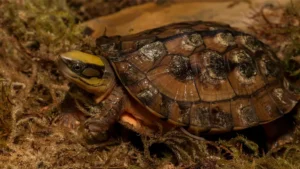
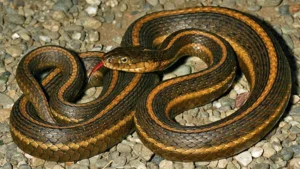
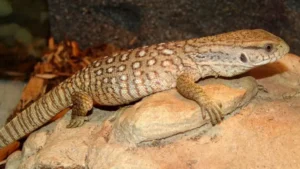
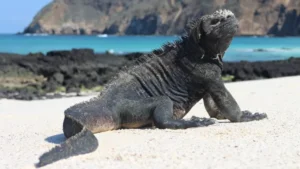


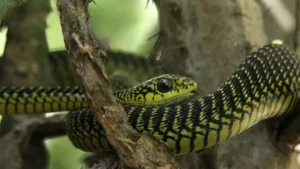


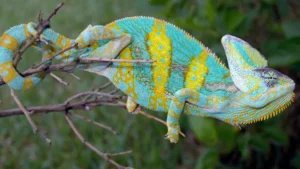

Leave your comment